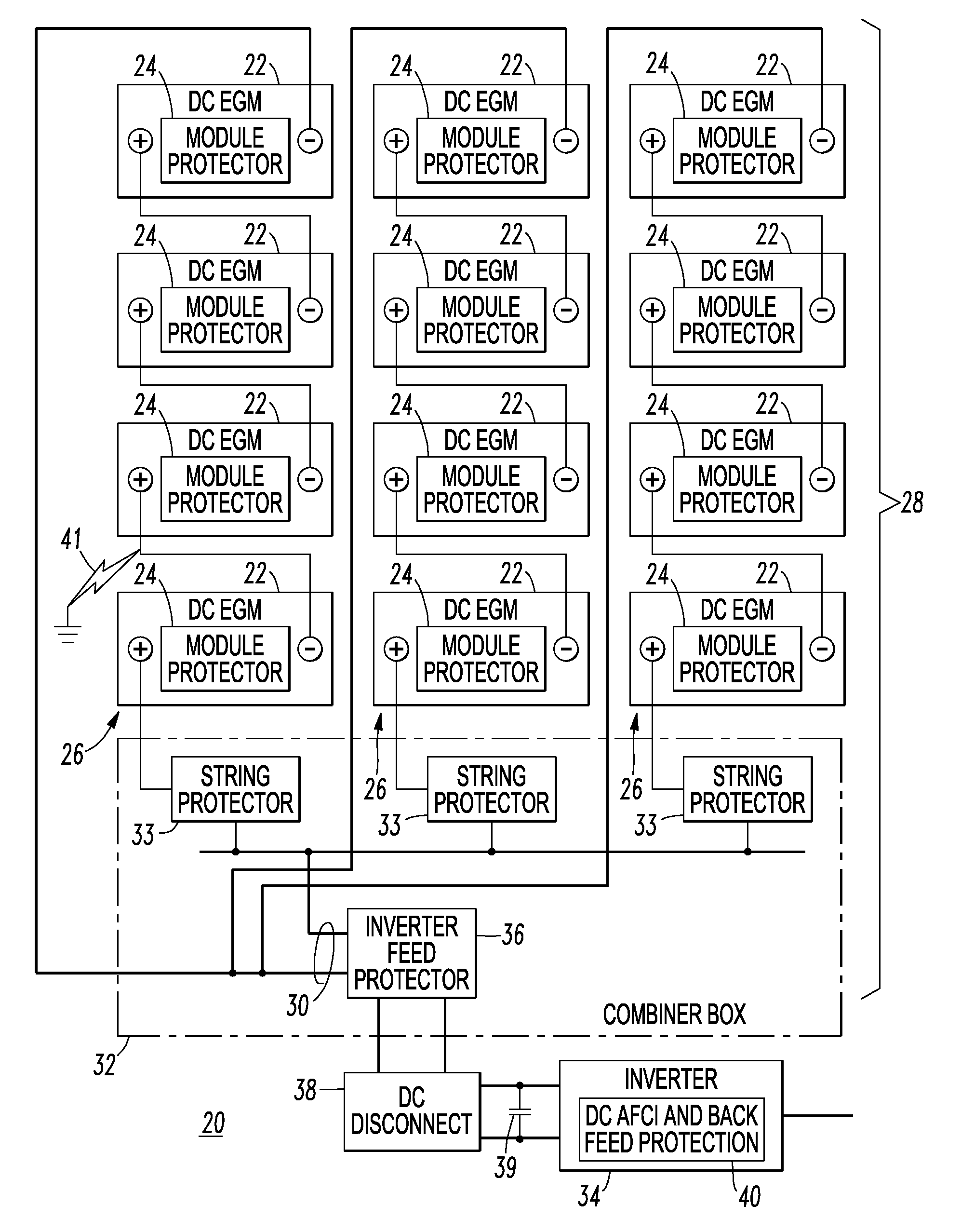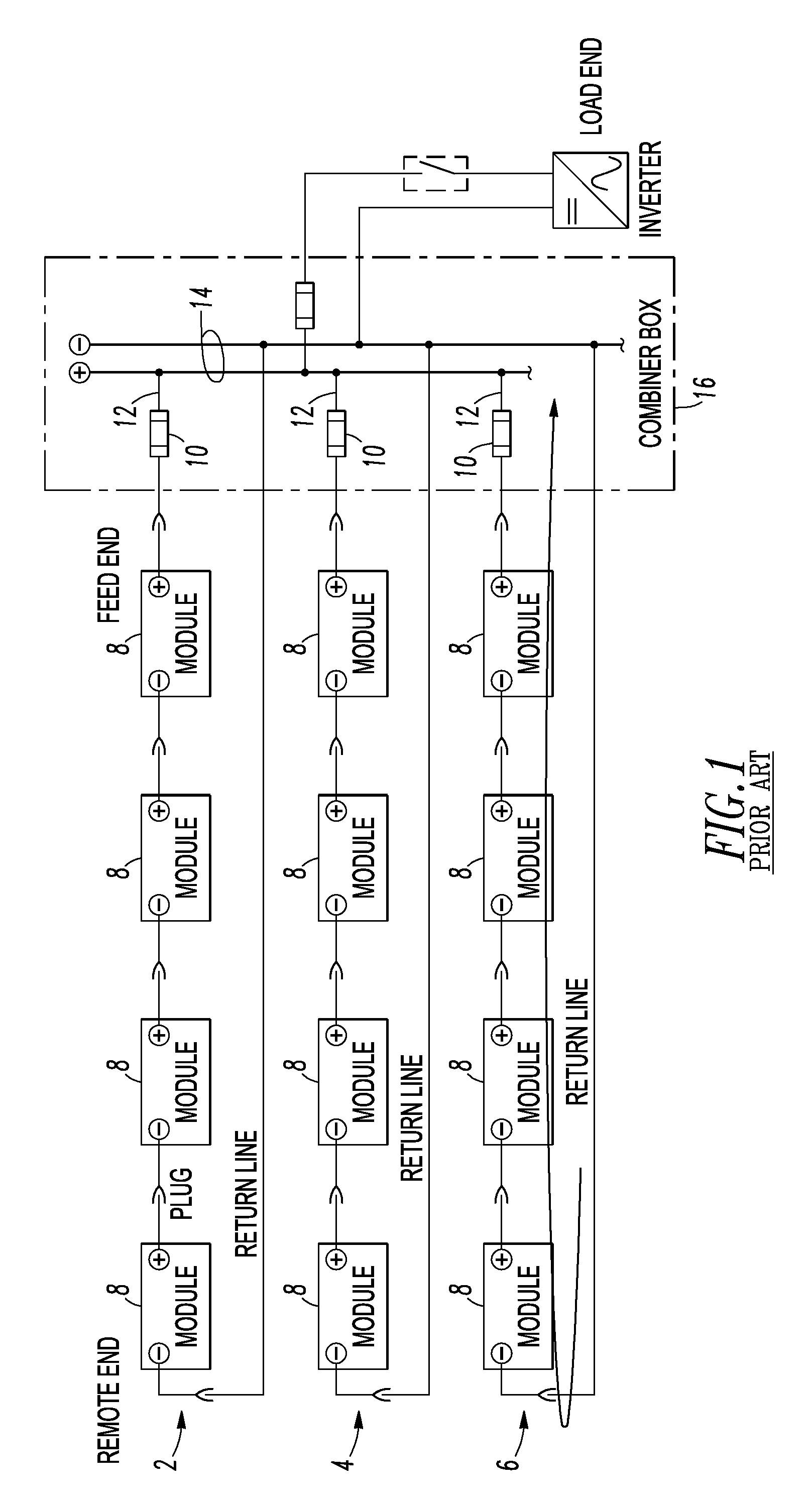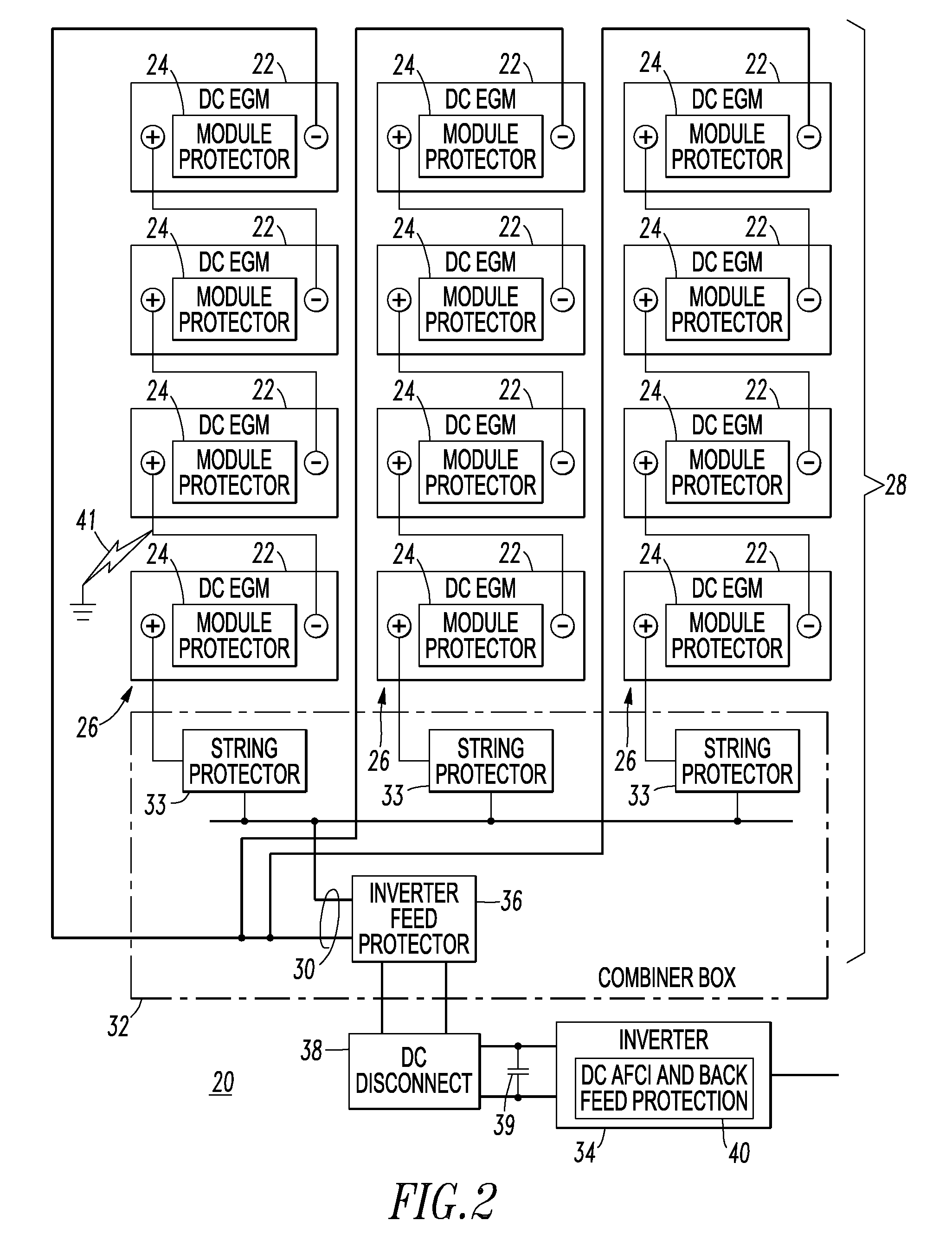Direct current arc fault circuit interrupter, direct current arc fault detector, noise blanking circuit for a direct current arc fault circuit interrupter, and method of detecting arc faults
a direct current arc fault and circuit interrupter technology, applied in emergency protective circuit arrangements, semiconductor devices, etc., can solve the problems of dc electrical generating modules that do not provide series or parallel arc fault protection, fuses are essentially useless in pv power systems, and all the connecting feed conductors between pv generating modules and return conductors are unprotected from arcing events or short circuits of many
- Summary
- Abstract
- Description
- Claims
- Application Information
AI Technical Summary
Benefits of technology
Problems solved by technology
Method used
Image
Examples
example 1
[0067]Referring again to FIG. 5, the example DC AFCI 60 can be for a string (e.g., without limitation, DC string 26 of FIG. 2 having a string voltage of about 24 VDC to about 600 VDC at greater than about 7 A maximum) or a DC EGM, such as the PV module 22 of FIG. 2. The DC AFCI 60 includes the current sensor 102, an analog front end 104 and the processor 72 (e.g., without limitation, microprocessor) that monitors the sensed string current 108 and reports the same (e.g., without limitation, through communication port 110). The DC AFCI 60 can monitor current (I) and voltage (V). The processor 72 can include a number (e.g., one, some or all) of an over current protector routine 112, an arc fault protector routine 114 (e.g., series; parallel) and a reverse current protector routine 116, which can provide various protection / alarm functions, as well as string performance (e.g., open; low output). The example DC AFCI 60 also includes the separable contacts 62 controlled by the processor 72...
example 2
[0070]FIG. 6A shows a routine 150 providing DC arc fault detection, control and protection for the processor 72 of FIG. 5. The routine 150 enables the processor 72 to detect a series arc fault or a parallel arc fault, such as a parallel arc to ground or to the return conductor. In FIG. 6A, the AC (frequency) thresholds of step 156 (thresholds 74 of FIG. 4) are valid for both series and parallel arcs.
[0071]The routine 150 starts at 152 after which the processor 72 is initialized at 153 and an integer, i, is set equal to zero. Next, at 154, a suitable delay (e.g., without limitation, 3 mS; any suitable delay time) is introduced. Then, at 155, the signal level is measured or input in all AC (high frequency) ranges of interest. Next, at 156, it is determined if a plurality (e.g., without limitation, three; any suitable plural count) of the peak current signals (e.g., 266 of FIG. 7) exceed the corresponding predetermined thresholds 74. If not, then at 158, the integer, i, is decremented ...
example 3
[0079]Referring to FIG. 7, a DC arc fault circuit interrupter (AFCI) 250 is shown including three current transformers (CTs) 252,254,256 employing three example predetermined, relatively narrow frequency bands (f1, f2, f3) to avoid known noise sources (e.g., without limitation, from a specific inverter (e.g., 34 of FIG. 2) with known switching frequencies). For example, the inductance (of the inductive coils L1, L2, L3) and the capacitance (of the capacitors C1, C2, C3) can be provided for suitable center frequencies of interest (e.g., without limitation, 1 kHz, 4 kHz, 10 kHz).
[0080]In this example, the number of filter circuits 68 is a plurality of filter circuits, the number of alternating current signals is a plurality of alternating current signals (e.g., one for each of the narrow frequency bands (f1, f2, f3)), the number of peak detectors 70 of the analog processing circuit 258 is a plurality of peak detectors, and the number of peak current signals 266 provided to the process...
PUM
 Login to View More
Login to View More Abstract
Description
Claims
Application Information
 Login to View More
Login to View More - R&D
- Intellectual Property
- Life Sciences
- Materials
- Tech Scout
- Unparalleled Data Quality
- Higher Quality Content
- 60% Fewer Hallucinations
Browse by: Latest US Patents, China's latest patents, Technical Efficacy Thesaurus, Application Domain, Technology Topic, Popular Technical Reports.
© 2025 PatSnap. All rights reserved.Legal|Privacy policy|Modern Slavery Act Transparency Statement|Sitemap|About US| Contact US: help@patsnap.com



